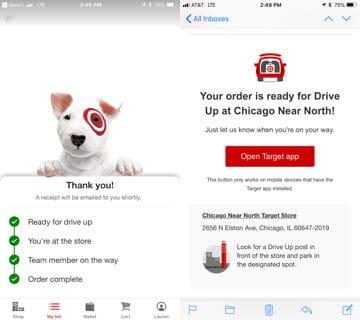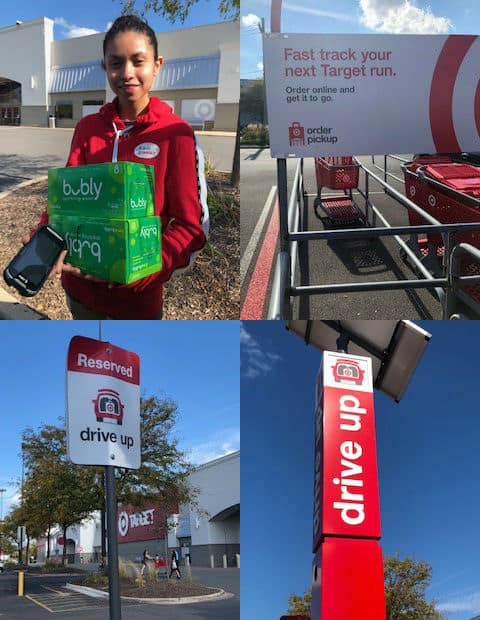
Lauren Freedman, president, the e-tailing group
Once again, I was forced into replenishment mode. Bubbly is the new drink of choice for my daughter. The first time I went to purchase the product, I did a quick search, and Target rose to the top of local stores where I might find it. Being a creature of habit, I drove to the closest Target, a small format store, knowing that I could be in and out in five minutes with self-checkout. When I ran in, I was annoyed to find that the one thing I needed was not in stock in any of the flavors that could have worked. It was so frustrating and it reminded me about why I continue to shift more of my shopping dollars online. But today, I just didn’t want to hassle with that. I wanted the job DONE.
Stores need to stock the goods
And getting the job done means going to stores that have products in stock when you want to buy. The message is clear, stores need to stock their shelves to satisfy the needs of shoppers. According to the e-tailing group’s 2018 Retail Resurgence survey:
- 73% of omnichannel shoppers surveyed indicate they choose the physical store when they need products now.
- The No. 1 reason omnichannel shoppers leave physical stores is products are out of stock in the size/colors they need.
- 84% indicate a well-stocked store by size and color is important to making for a good store experience.
One of the biggest challenges that I’m finding is physical stores are not holding up their end of the bargain when it comes to stock. You are almost training me not to expect products to be in stock and with that you are telling me not to make an in-person visit. I believe this is very dangerous for retailers as in many instances online shopping is surgical and doesn’t deliver the incremental purchases retailers are hoping for. It is my wish for retailers that they seriously reconsider and factor in the above findings from their customers.
If we all continue to visit and find you never have what we want, our frustration levels will continue to rise. Just last week, at dinner with a friend, she noted this exact phenomenon, emphasizing her lack of interest in visiting stores. She alluded to the fact that several stores did not have the sizes in a shoe for her husband or a pair of jeans she coveted. And to boot, there was no service, adding insult to injury. She simply went home and ordered from Amazon and another missed store opportunity happened. So, if this is the case, then what is the store’s role?
Target’s got it with drive-up
Being able to see if the store has it in stock before visiting was my starting point. I had an “aha moment” and did a quick search to see if Bubbly was in stock at one of the other Target stores nearby. The good news was it was available. The even better news was I wouldn’t have to go in the store since I decided to test Target’s Drive Up service. I went straight to the app and I was given two options, either to get it at guest services, which would require finding a parking space at my always-busy Target. The second option was to use Drive Up. I hadn’t tried it, but was game because my time was limited that day. I placed my order.
Communication starts the process and efficiency gets the job done
Most impressive was the communication and the user-friendly nature of the experience. I received an email that my order was on its way. By opening the app, I could head over to complete this errand. Target referenced the signage I should look for which was helpful, since I hadn’t noticed it on past trips. Upon arrival, about 10 minutes later, I saw the well-positioned signage and parked. I clicked, “you’re at the store,” at which point I let Target know my vehicle type. In less than five minutes, a Target team member was on the way, and I never left my car. It was almost embarrassing that she was bringing out just the Bubbly, but this was the price Target had to pay for not being in stock at the other store.


In many ways, it was not even like shopping. On the one hand, the efficiency was great, the designated space ideal and sure to be a time saver during the busy holiday season. On the other hand, going inside gives me a chance to see what is new, get my quick Target fix and also replenish some of the groceries I might need.
According to industry reports, Target understands shoppers like me and is betting on this Drive Up service. It indicates there will be almost 1000 stores this year that can service shoppers with the ultimate in convenience. Whether one needs a single item, doesn’t want to venture out in a snowstorm or carry a clumsy item out in one of Target’s red shopping carts, this is the service for you.
Historically speaking, I’m reminded of services from other retailers like Sears, who would run your product out to the back of the store. Sears introduced In-Vehicle Pickup in 2014. It enabled the service with its Shop Your Way mobile app, allowing customers to get their purchases within five minutes of arrival. One thing I do remember vividly is that it had a timed system that monitored performance and my one visit there was well executed.
The other retailer that comes to mind for me is The Container Store, where I have taken advantage of its curbside pickup option several times. Mostly, it’s a case of not wanting to carry heavy products, coupled with the time-savings.
Logistics foster convenience
At the end of the day, all of these options spell convenience. Convenience varies by customer but always saves shoppers time. A review of inventory and stock policies may be timely as shoppers need to make each and every trip count. When they visit, going the extra mile with Drive Up services turns a negative experience into a positive one that inks that retailer’s customer-minded behavior into your shopping memory. Stock and delivery marry the old-fashioned with the innovative and this is what it will take for physical stores to stay top of mind.
Favorite